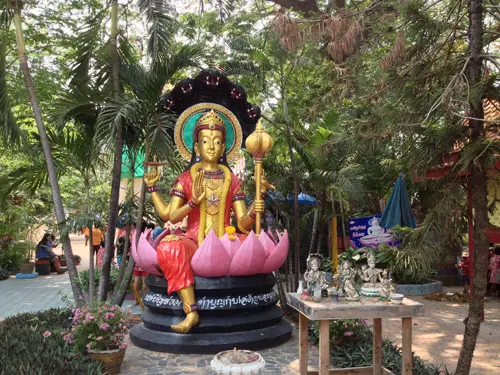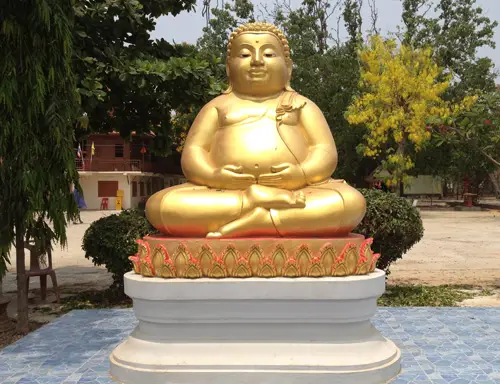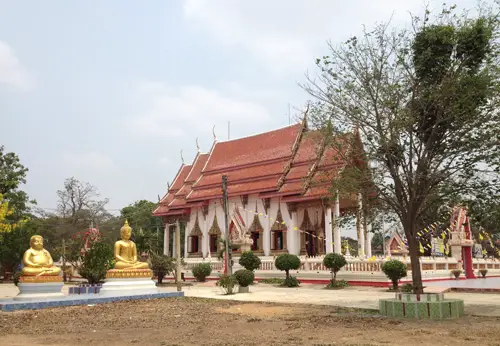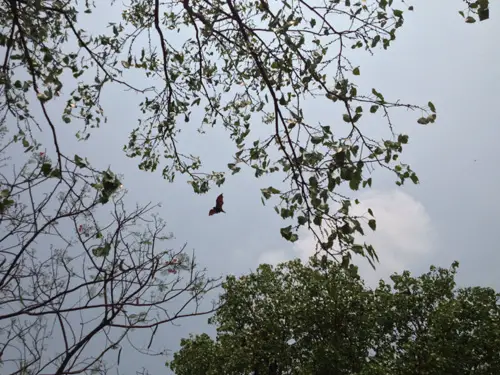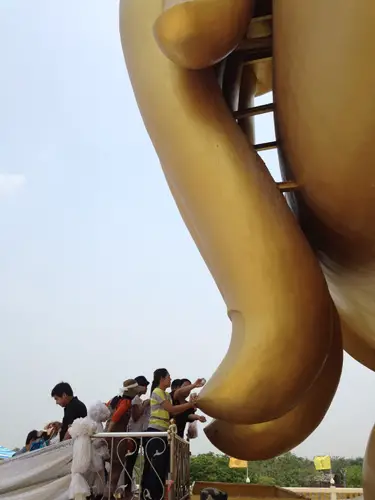Every seasoned and occasional traveler seems to like to berate the Japanese (and, at least in Thailand, also the Chinese) tourists’ custom of walking around with their cameras hanging around their necks and mindlessly taking photos of this and that attraction, happy that they’ve ticked another box in their travel itinerary and they can now move on to their next destination. It so happens that not everyone is a “cultural traveler” and some tourists are just happy to briefly witness a foreign location, record it with their digital cameras for the family album, and just be content with the fact that “they’ve been there.”
However, with the madness of social media and different apps taking hold of almost every aspect of our lives these days, people in Thailand have also now gone mad about travelling all the way from their homes to certain destinations within the Kingdom for the simple reason of taking a “moom mahachon” or a “mass shot.” These are photos of people posing at famous locations and then uploading them onto their Facebook or Instagram accounts for the entire world to see. Once the photos become viral, everyone who has the time and can afford it, travels to that same place to take that same picture, in that same posture only to show it off on their own social media accounts. To me, that’s pretty much just like saying “I’ve taken a picture there” and is not any different from your average photo snappy-friendly Japanese tourist.
The funny thing is that all the three reasons why people travel which I have mentioned above are perfectly fine: ‘cultural travelers,’ the one photo-shot tourist and the “moom mahachon” crowd. There’s no reason why one’s experience is more valuable than another’s just because they “immersed themselves into the culture of the place,” or because they “visited ten attractions in a day,” or because they “have a picture of themselves at a popular location.” We’re all different and, as long as our travels leave a light footprint on the environment, we should be free to follow our desires and satisfy our personal curiosity.
A destination in Thailand where you can be any kind of tourist you like is the province of Ang Thong where the traveler seeking a genuine immersion in Thai ways of life can roam among the bat-filled trees at Wat Chanthraram, whereas the tourist looking for less-known destinations can snap pictures of the terraced-shaped chedi at Wat Ta-It, and social media obsessed users can take a “moom mahachon” of the Buddha statue at Wat Muang. Actually, you should visit all of these three destinations and, if you drive the 100km from Bangkok to Ang Thong, you can easily follow the road signs to reach each of these destinations in the order mentioned above.
The official seal of Ang Thong province shows golden ears of rice in a bowl of water and these items perfectly reflect the geography and economy of the province. Situated in the central plains north of Bangkok, Ang Thong is crossed by two rivers, the Chao Phraya and Noi, which provide plenty of water for the forestless flat agricultural lands that earn the bread and butter of the province’s population. It’s then no surprise that Ang Thong literally means “gold basin” in Thai.
Also known as the Bat Temple, Wat Chanthraram is filled with trees where, during the day, huge black bats hang upside-down waiting for the evening to come when they will fly off to hunt for food. The temple grounds are peaceful and, unlike many other bat caves which have floors covered in bat droppings, the monks serving the monastery of the temple take good care of the “bat orchard.” Just looking up at the trees and waiting for the odd bat to fly from one branch to another makes for a relaxing time.
A more “famous” bat temple is Wat Pho Bang Khla in Chachoengsao Province. Here one can see ‘flying foxes’ (Pteropus Vampyrus) or fruit bats, but as these species of bats communicate using loud screeches and cackles, the atmosphere at the Bat Temple in Ang Thong is much quieter, giving the city-weary inhabitant a much needed time for self-reflection and even a decent time for personal meditation.
Your next stop should be at Wat Ta-It where the golden terraced-chedi (Buddhist stupa) known as Phrathat Chedi Sri Phothong can easily be seen from the road. As you walk through the temple compound, a drive-in flanked by well-maintained bushes and trees will give you a good photo opportunity of the eight-story chedi which, as strange as it may sound, looks just like a finished version of Pieter Bruegel the Elder’s representation of The Tower of Babel!
Wat Ta-It was built in 1761 and was originally used as a centre for firebrick production and distribution and hence its name as the “Temple of Brick Port.” The golden chedi is a modern structure but it houses two historically important images of the Lord Buddha. If you don’t mind the heat inside, you can actually go all the way up to the top of the chedi. The effort is well worth it as the small windows on the eighth level provide an arresting view of the countryside and the rest of the temple compound.
Maybe the most impressive destination in Ang Thong, rivaled only by the second longest reclining Buddha in Thailand (which is located at Wat Khun Inthapramun in the same province), is Wat Muang. Here you can find the largest Lord Buddha statue in Thailand and at over 90 metres high, it is the ninth tallest statue in the world. Although the temple compound is filled with many other points of interest, such as graphic depictions of the Buddhist hell, intricate Naga decorations, and the largest lotus petals in the world surrounding an ubosot (Ordination Hall), to name just a few, the main attraction is its seated Lord Buddha statue.
Officially known as Phra Buddha Maha Nawamin, this huge Buddha statue stands at 92m tall and 63m wide and was completed in 2008. The Lord Buddha is sculpted with legs crossed, the left hand facing upward on his lap, while his right hand rests on the right leg with the fingers curling down almost to the pedestal. Seen from aside, it is this exact location that is a coveted “moom mahachon,” a picture everyone wants to take: the curved golden fingers of the Lord Buddha with a clear blue sky in the background. But since there has been so much hype on the Internet about it, the place is always packed and the chances of actually taking a clean, clear, shot are, unfortunately, minimum these days.
There are actually many more attractions worth seeing in Ang Thong but, if you’re only on a day trip or if you’re just passing through, then these three attractions will make the time spent there extremely worthwhile. All the destinations described are free of charge to visit and are easily accessible by motorcycle taxis or tuk-tuks if you do not have your own car to get there.
From Bangkok, you can reach Ang Thong by bus from the Northern Terminal Bus Station on Kamphaeng Phet II Road or by minivan from the Victory Monument. If you drive there yourself, then you can easily find your way to and within Ang Thong using Google Maps.
